Cast iron and bimetallic radiators are not suitable? There is a solution - steel panel heating radiators
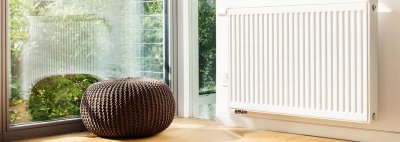
Panel radiators are devices that, due to their functionality, heat output and relatively low cost have firmly occupied the niche of heating systems for private homes.
Content
Steel panel heating radiators: what are they?
One of the varieties of heating radiators are panel devices.
Device
For the production of panel radiators, as a rule, the following is used: thin steel sheets that are placed under the hammer of a molding press - it creates many channels in them for the flow of coolant.
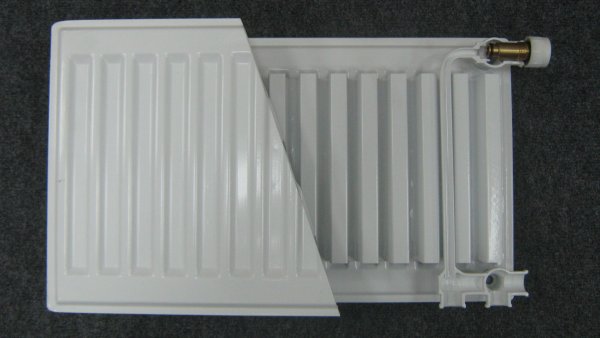
Photo 1. Steel panel heating radiator. Inside the device there are many channels for the coolant to flow.
After two such sheets are fastened together, forming a long zigzag line inside itself for the circulation of hot water.
Important! The radiator may consist of several similar sheets connected together - The power depends on their number.
Technical specifications
The efficiency of the device depends on the number of panels and the presence of convectors on them. Convectors are necessary to increase the intensity of heat transfer from the metal heated by hot water into the room. In addition, some types of batteries can be covered with a casing, which also improves heat transfer, but makes cleaning difficult. For ease of distinguishing between the many variations of convectors, they are usually designated by two-digit numbers: The first is the number of water supply panels, the second is the number of convectors.
The following are distinguished:
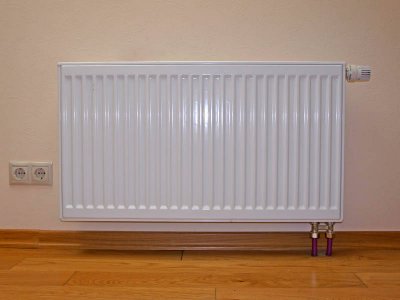
- 10-type. One heating panel without convectors and casing.
- 11-type. This model simply adds a convector.
- 20-type. Two water-conducting plates without a U-shaped convector.
- 21-type. One convector is installed inside and everything is placed in a casing.
- 22-type. The same design, the only difference is the number of convectors inside - there are two of them.
Besides these, there are also types 30 and 33: they are no different in design, but a larger number of parts significantly increases their power and operating efficiency.
Attention! Radiators type 30 and 33 due to their power and convection, they collect a lot of dust, and they are also usually impractical to install in small rooms, so when creating a heating system yourself, it is better to choose type 22.
Peculiarities
To technical, economic and design features panel radiators refers to:
- Low cost compared to bimetallic ones.
- The lightness of the entire structure is ensured by the use of thin steel sheets.
- Functionality: can be installed in an apartment, house, garage, and even on a balcony, veranda or attic.
Pros and cons
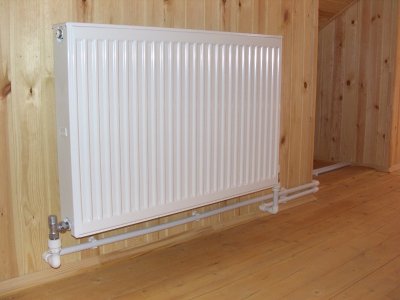
Advantages:
- It is this heating system that transfers heat to the air in the room faster than other competitors in the niche, that is, exhibits the highest thermal conductivity.
- Very easy and quick installationOf all the heating solutions, installation is easier only with an indoor fire.
- Hot water circulates through very narrow channels, so heat transfer from it to the metal occurs quickly, and the coolant itself - water - is required for this very little. Thanks to this design feature, it is possible to heat up the cooled water very quickly, which provides a third advantage.
- Energy efficiency: the devices required for the radiator to operate (pump and heating boiler) will not overspend electricity on circulating and heating water, since the device requires much less liquid to operate than bimetallic and cast iron batteries.
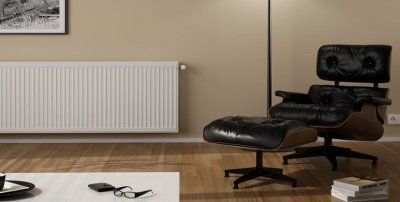
- Sheet steel makes radiators light and environmentally friendly, which ensures ease of transportation and a wide range of applications: from private homes to kindergartens.
Flaws:
- If you drain the water from the radiator at least several times, thereby allowing air to get inside, then there is a high chance that corrosion processes will begin in it. For normal and long-term operation of the device, it is necessary to constantly maintain water circulation, and accordingly, to keep the pump always running.
- Good thermal conductivity is a double-edged sword. The small amount of water in the system channels and the presence of a pump ensures a quick change from cooled water flows to hot ones. But if you turn off the pump, the thin steel of the radiator will cool down very quickly and the air in the house will too.
What area is best to install? Heat transfer calculation table
For normal operation of the panel system a circulation pump is required, which cannot be installed everywhere. There is already hydraulic pressure in the pipes of apartments, and for a private house you can buy a pump, so the main area of application of panel radiators is apartments and houses of not very large area and without high humidity.
Panel radiators - excellent heating solution for office premises, because they can be easily adapted to any design idea, and energy efficiency and low cost are the key to a quick payback.
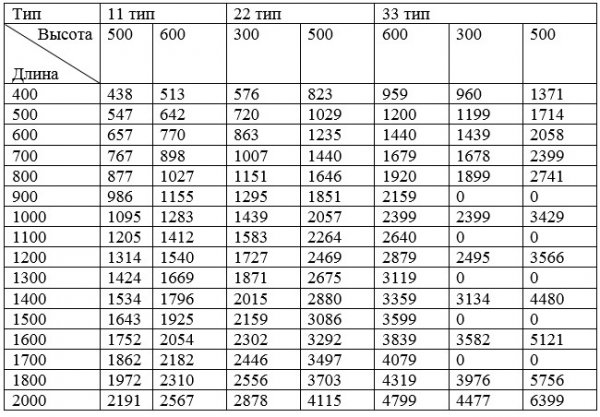
Photo 2. Table for calculating the heat output of panel radiators types 11, 22 and 33 depending on the length and height of the devices.
Installation of metal panel radiators with bottom connection
As a rule, radiators are supplied complete with nozzles (fittings) for pipes, if they are suddenly needed, and fasteners. Sometimes the kit may include Mayevsky tap and thermometer — their installation will allow the accumulated air to be released from the device’s channels and the water temperature to be regulated, and thus the air temperature in the room.
Installing panel radiators is really a simple matter. Removing old radiators, especially if they are cast iron, will be much more difficult. Once the wall has been cleared of the old pipes, installation begins:
- The device may have channels for connecting pipes. both from below and from the side, but this does not affect the method of fastening. As a rule, when a radiator is installed close to a wall, hooks or a bracket are used, but if there is a decent distance to the wall, legs are used.
Important! Heavy It is better not to mount radiators 30 or 33 on legs, as they may not be able to withstand it.
- Even when mounting to a wall, it is important that the distance between the radiator and the surface is at least 15-20 centimeters, otherwise the heat will start to go into the wall. And you also need to make sure that the heating unit rises from the floor by 10-12 cm — for the same reason.
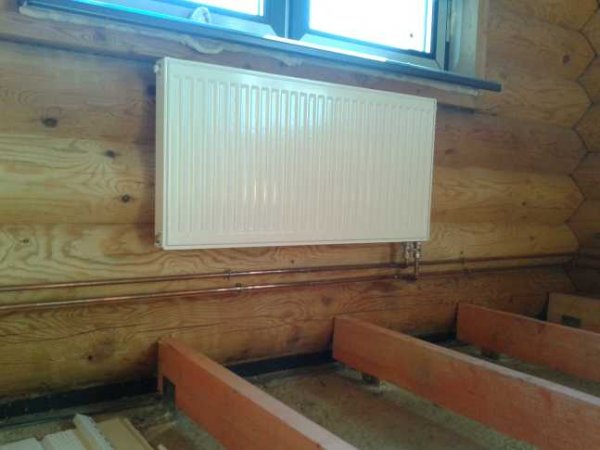
Photo 3. Installation of a panel heating radiator. The heating system pipes are connected to the battery from below.
- When installing it is imperative to maintain the correct position relative to the imaginary line, drawn through the device and the wall: it must be perpendicular to the latter, otherwise the water flow will be curved in the panel channels.
Completion of installation and operation of the radiator
After the radiators have been correctly placed and secured, all that remains is to attach all the necessary devices, switches and pipes to it, and then secure everything with sealant and, if necessary, plumbing thread. Then the system can be checked again and the coolant can be started.
Useful video
Watch the video, which demonstrates the process of installing a steel panel radiator.
The main thing is not to rush
It is important for the buyer not to make a hasty choice. Knowing the characteristics of panel radiators and understanding in which room they will be installed, it is necessary to correlate the power of the device with the area and purpose of the room: the air temperature of the veranda should be lower than the temperature inside the bedroom, and A 33-type radiator in a 70 sq. m. living room and a 20-meter children's room will provide radically different heating. It is advisable to make a purchase only after all the estimates and comparisons in order to avoid problems.






